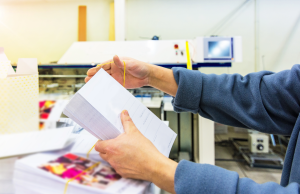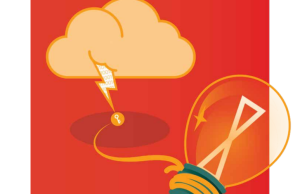Organizations are turning in record numbers to in-house advertising staff and farming less of the work to outside agencies, signaling a departure from the outsourcing trend that has increasingly become the norm for other categories of professional services.
More than 4 out of 5 respondents in a recent study by the Association of National Advertisers (ANA) reported that they now have in-house advertising capabilities, a near-doubling of the number who gave the same answer 15 years ago. “In-house ad agencies are no longer just a trend – they’re here to stay with 82 percent of ANA members now reporting that they have an in-house agency,” wrote the authors of the report, The Continued Rise of the In-House Agency: 2023 Edition.
Researchers compiled the findings from interviews conducted with 162 marketing executives at both nonprofit and for-profit organizations this past February and March. Senny Boone, executive vice president of the ANA Nonprofit Federation, told The NonProfit Times that the findings can be instructive for both sectors though a breakdown for each was not available.
Notably, only 42% of respondents reported having in-house shops when the study first was conducted in 2008. That percentage has been rising steadily ever since, increasing to 58% in 2013 and 78% in 2018. The 82% who now embrace an in-house model are further confirmation that in-house shops “have become firmly entrenched as part of the holistic marketing ecosystem and are now a mainstay,” according to the authors.
More than half of the services now performed in-house fall into the creative category (52%), followed by account management (11%) and production (11%). The pandemic and its attendant increase in hybrid and remote work have further ramped up the move to in-house staffing in these areas. Though workforce shortages have been an issue for some, most respondents reported a net benefit from the ability to hire remote employees from outside their home base, including former agency employees who wouldn’t have been available to them pre-pandemic.
External advertising agencies, however, still play an important role with 92% of respondents relying on them to handle overflow work or work requiring specific capabilities that in-house staffs lack internally. Marketers also turn to them for big ideas and expertise when planning large tentpole campaigns and big marquee ad rollouts, particularly when large media buys are involved.
“Better, faster and cheaper” – better service, faster turnaround time, and lower cost – are the primary reasons for going to an in-house staff with cost efficiencies topping the list. The desire for a dedicated in-house team with institutional knowledge of an organization’s mission and brand identity was cited as well.
Data – and the need to own, control, and protect it – is emerging as the latest consideration for bringing work in-house, particularly in regulated sectors such as healthcare. Having ownership of this data also better equips marketers to analyze how clients interact with their brands and to provide personalized experiences that lead to them coming back in the future, according to the authors.
Overall satisfaction with their in-house services remains high with 87% of those with an in-house model saying they’re “satisfied” and 24% “completely satisfied,” according to the authors. “Agencies still play an important role for marketers, witnessed by the fact that 92 percent of respondents still use them. But the growth of in-house capabilities has clearly changed the client/agency relationship over the past 15 years,” said ANA CEO Bob Liodice.
The full 48-page report can be found here.








